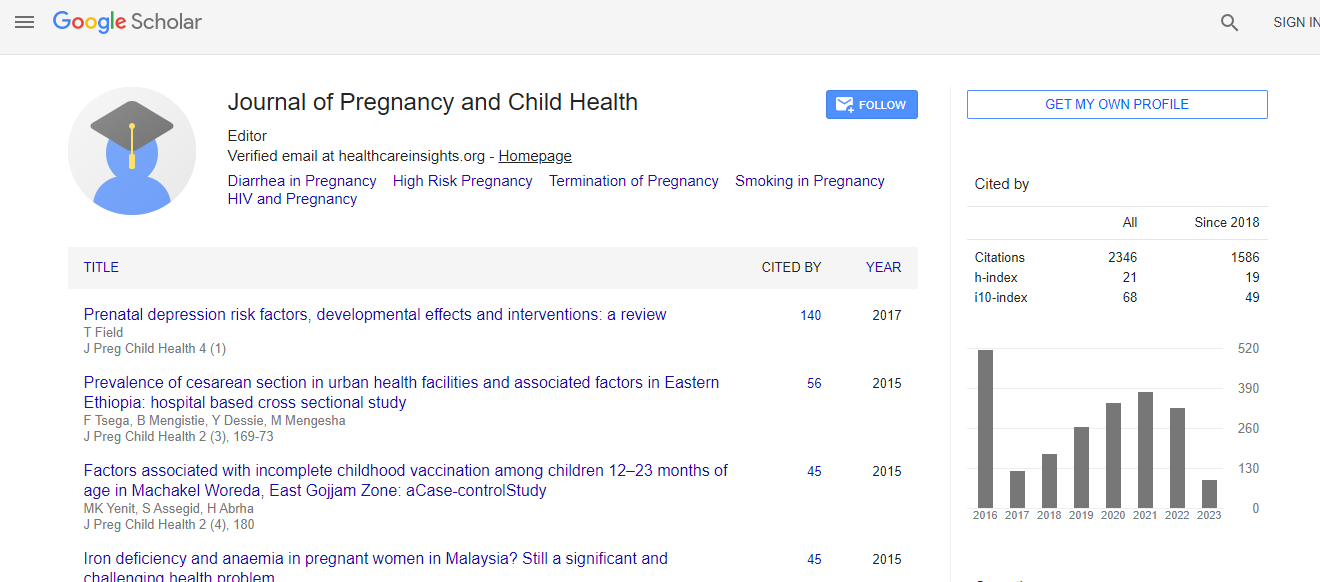Research Article
Neutrophil Lymphocyte Ratio and Red Cell Distribution Width as a Marker of Preeclampsia: A Retrospective Study
Damar Prasmusinto1*, Rosalyn C Jono1 and Yuyun Lisnawati21Fetomaternal Division, Department of Obstetrics and Gynaecology, University of Indonesia, Jakarta, Indonesia
2Department of Obstetrics and Gynaecology, Persahabatan Hospital, Jakarta, Indonesia
- *Corresponding Author:
- Damar Prasmusinto
Fetomaternal Division
Department of Obstetrics and Gynaecology
University of Indonesia, Jakarta, Indonesia
Tel: 62 816 109025
E-mail: masdamar@yahoo.com
Received date: February 27, 2017; Accepted date: March 14, 2017; Published date: March 19, 2017
Citation: Prasmusinto D, Jono CJ, Lisnawati Y (2017) Neutrophil Lymphocyte Ratio and Red Cell Distribution Width as a Marker of Preeclampsia: A Retrospective Study. J Preg Child Health 4:307. doi:10.4172/2376-127X.1000307
Copyright: © 2017 Prasmusinto D, et al. This is an open-access article distributed under the terms of the Creative Commons Attribution License, which permits unrestricted use, distribution and reproduction in any medium, provided the original author and source are credited
Abstract
Background: Preeclampsia occurs in 3-7% of pregnancy and contributes to 18% maternal mortality. Unfortunately, proper diagnosis and prompt treatment for preeclampsia are lim ited in rural area due to limited facilities. Neutrophils, lymphocytes, and red distribution width, some of the inflammatory response, are considered as marker for preeclampsia. We evaluated the NTR and RDW as a reliable marker for preeclampsia in limited facilities health care. Methods: A retrospective study was conducted to 254 pregnancies at Persahabatan Hospital, Jakarta, Indonesia. We obtained NTR and RDW data from the complete blood count panels and differed to two groups: pregnancies with preeclampsia and not, early and late onset of preeclampsia. We analyzed with T-test and Mann- Whitney test using SPSS 20.0 and performed diagnostic analysis in investigating sensitivity and specificity of NTR and RDW as marker tools. Results: There were 136 pregnancies with preeclampsia and 118 normal pregnancies. Pregnancies with preeclampsia showed higher NTR with mean 4.41 (95% CI 1.41-32.54, p<0.001) and RDW with median 14.2 (95% CI 1.48-23.90, p<0.001). Onset of preeclampsia did not influence the NTR with median of early onset preeclampsia 4.35 (95%CI 1.41-17.56) and late onset of preeclampsia 4.41 (95% CI 1.69-32.54). Hence, RDW showed statistically significance (power 97.29%, p<0.001) as higher range was obtained in the late onset of preeclampsia (95% CI 14.91 ± 2.16) that in the early onset of preeclampsia (95% CI 13.50 ± 1.47). In ROC (Receiver Operating Characteristic) curve analysis, NTR become an important marker for preeclampsia with sensitivity 80.1% and specificity 87.3% (95%CI 0.85-0.93, cut off value 3.295). RDW shows sensitivity 50.7% and specificity 71.2% (95%CI 0.55-0.69, cut off value 14.17). Conclusion: NTR and RDW can be markers for preeclampsia as higher NTR and RDW, as inflammatory responses, may be related to preeclampsia.

 Spanish
Spanish  Chinese
Chinese  Russian
Russian  German
German  French
French  Japanese
Japanese  Portuguese
Portuguese  Hindi
Hindi 
